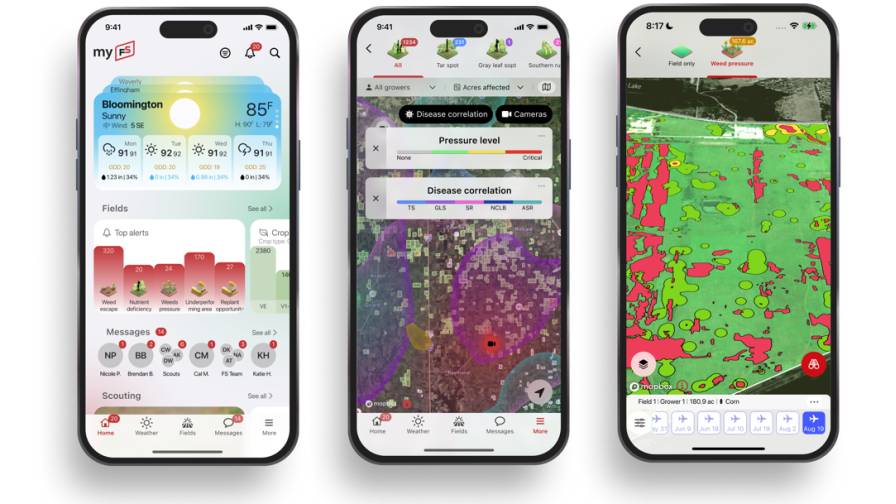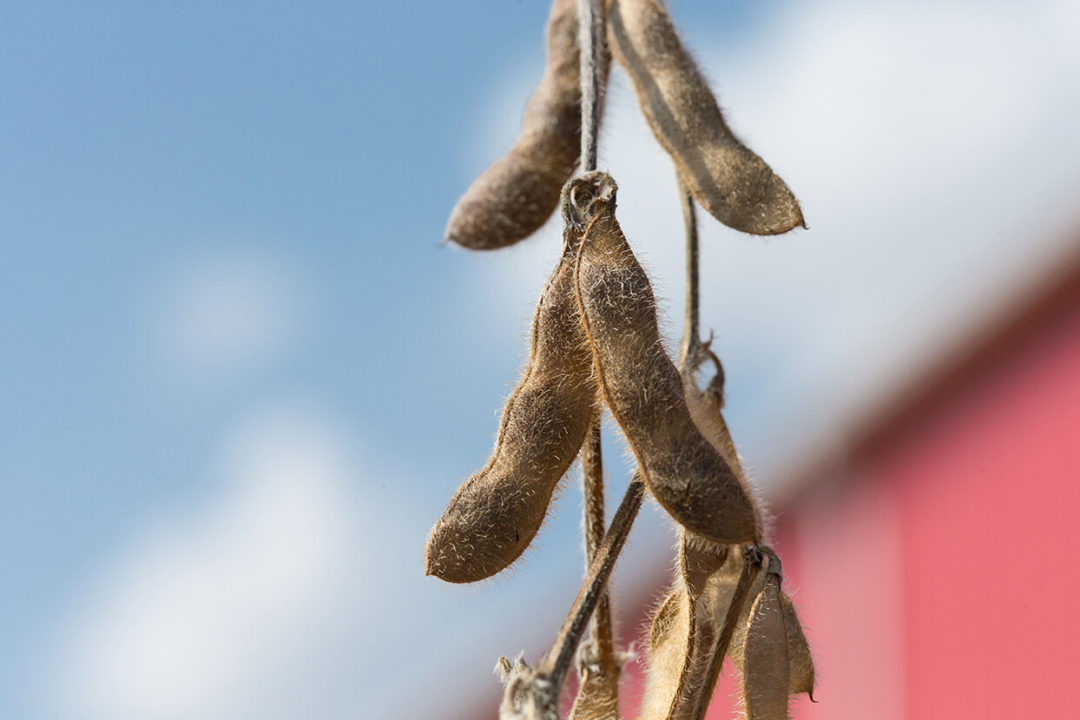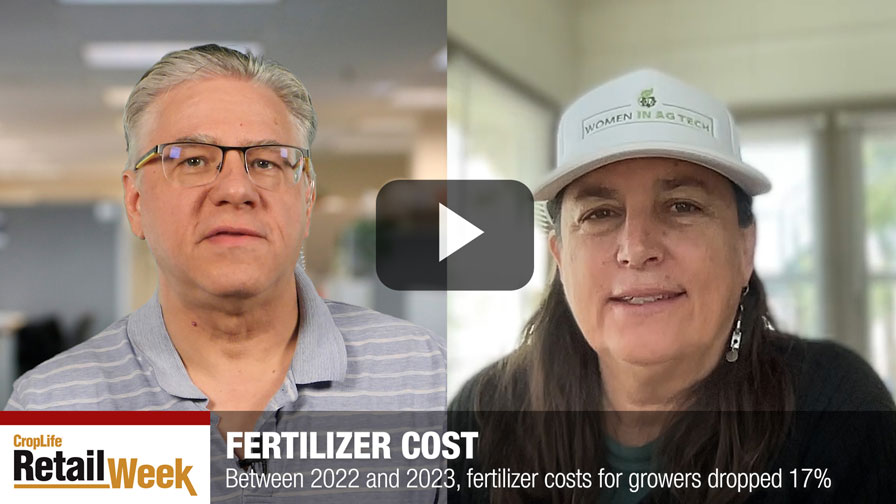Seed Care Stands Strong

Seed care today is a multi-faceted endeavor that promises great return for the retailer that stays on top of the latest and greatest actives and secondary treatment products.
As an ag retailer, if there’s one sure-fire way to upset valuable grower-customers, it’s probably selling them a bag of today’s expensive seed and then having it die in the ground due to insufficient seed treatment or, perhaps even worse, a treatment ill-suited for that grower’s production climate, that the retailer recommended.
Either way you slice it, it’s just bad business, and if it occurs frequently enough it’s probably going to lead to no business.
One of the easiest ways to avoid that dreaded “What the heck, Mister Trusted Advisor” phone call is to stay abreast of all the latest seed applied chemistries on the market, as well as new innovations coming online in the near future.
So, in that vein, here’s a roundup of what we’re seeing in seed treatment active ingredients, as well as what some would consider “secondary” treatment chemistries such as inoculant, colorants and polymer formulations for the coming year.
Actives Advancing
Biotech titan Monsanto spent 2014 advancing the launch of its newest treatment, Acceleron, which debuted for the 2013 season. Acceleron is labeled in corn, soybeans and cotton, and features a single insecticide mode of action (imidacloprid) alongside two fungicides (pyraclostrobin, metalaxyl).
For 2014, Syngenta launched CruiserMaxx Vibrance, a premix formulation of its popular CruiserMaxx and Vibrance treatments, according to Bruce Howison, Seedcare product line head.
“Customers are pleased with the performance they are getting from Vibrance, and we are seeing it adopted in almost all of the soybean treatment mixtures customers are using such as CruiserMaxx Beans with Vibrance, and Clariva Complete Beans seed treatments, both combinations of separately registered products,” he says. “In addition, in 2014-15 we are launching Vibrance on corn, and we expect that most of our seed company customers will adopt Vibrance in their CruiserMaxx Corn or Avicta Complete Corn offerings in the next season.”
The next couple years look to be busy times at Syngenta’s Seedcare division, as according to Howison, the company expects to launch a solution against sudden death syndrome for the 2015 season, as well as receive label approval in sugar beets for Clariva in 2015 and Vibrance in 2016. In cotton, Syngenta just received registration for Avicta COT 202, a new premix that increases ease of use for cotton seed treaters.
“And in cereals, we will launch two new products: Vibrance Quattro and Cruiser Vibrance Quattro,” adds Howison. “These products increase the disease spectrum by bolstering protection against fusarium and true loose smut, and add a fungicide-only, ready-to-apply formulation.”
Not one to be left out, Valent U.S.A. is priming for a particularly historic launch this season. Its newest seed protection system, INTEGO SUITE (ethaboxam+metalaxyl) in soybeans, as well its “straight goods” fungicide companion, INTEGO SOLO, received federal registration in February 2014.
What began six years ago with a brainstorming meeting between Valent colleagues has spawned the first new seed protection fungicide chemistry (ethaboxam) for Pythium and Phytophthora in the last 30 years, according to Trey Soud, seed protection business manager.
“Where INTEGO really fits into is, in the soybean disease spectrum there’s a couple really prevalent diseases causing the most yield loss and damage, and those two diseases are Pythium and Phytophthora,” says Soud. “The chemistry that growers have used traditionally against those diseases is metalaxyl, which is 35 years old, and it’s become evident that it doesn’t control as broad a spectrum of species of those two diseases as what we once thought it did.
“INTEGO SUITE is the first new product in 35 years that controls Pythium and Phytophthora as a seed treatment, but it doesn’t just do that. It controls a much broader spectrum of Pythium species, and it controls Phytophthora much better than metalaxyl will. On top of that, ethaboxam tends to stay around the seed zone and will protect that seed zone for a longer duration than metalaxyl, which moves quickly through the plant.”
According to Soud, after six years of joint university and private research evaluation of the new active, the results show about a bushel yield increase over the aforementioned CruiserMaxx and Acceleron.
“We kind of soft launched it this year with a few of our key retailers in specific geographies,” says Soud. “For 2015, INTEGO SUITE will be broadly available and we’re very excited to get this thing going.”
Colorants, Inoculants & Polymers, Oh My
Seed is in fact so valuable nowadays that simply applying active ingredient isn’t sufficient.
Advanced Biological Marketing (ABM), a Van Wert, OH-based inoculant manufacturer, is one of the many players in what can be referred to as the secondary seed care products market.
In corn the company has SabrEX, a two strain trichoderma inoculant product that comes in three formulations. SabrEX LQ is the formulation that ABM is distributing to seed companies for upstream treating. According to Dan Custis, CEO, SabrEX has shown an average 8.5 bushels per acre increase across a combination of university and private industry trials.
ABM’s soybean products, known colloquially as “America’s best inoculants,” are led up by Graph-Ex SA, which is a formulation for downstream treating that features a unique trichoderma strain that ABM claims boosts yields a bushel and a half.
According to Custis, Graph-Ex SA’s 120-day planting window is a favorite benefit of retailers as it allows a retailer to lock in supply and not worry about the Rhizobia strain expiring post-treatment.
Another proprietary feature of ABM inoculants is the company’s Induced Gene Expression Triggers (iGET), which Custis says allows the company to find the most effective strains of trichoderma and formulated those into product.
“iGET increases the intensity of photo synthesis within the plant, expands the root system and makes for a larger diameter stock in corn and beans,” says Custis. “And it makes the plant more efficiently uptake nutrients during the growing season.”
Yet another retailer-focused solution, Marauder, is an all-liquid, high concentrate IGET formulation of Bradyrhizobia and liquid Bacillus. Custis claims Marauder, which has a 60-day planting window after application, has shown a three-bushel yield increase over the untreated check, and its low application rate makes the product a sound investment.
“This is a great product for retailers because you get that 60-day planting window,” he says. “When you get into the spring and it’s really busy at the dealership, if you get rained out of the field for say a week or two, with Marauder you don’t have to worry.”
With its products now in distribution in 11 countries outside the U.S., ABM organizationally is focused on the same target as the rest of the industry: Feeding nine billion people by 2050.
“I get a lot of sideways looks when I say this, but I truly believe that if we can get the soil in balance with micronutrients, fertilizers and microbes, corn has the potential to yield up to 500 bushels per acre,” says Custis. “And if we can get production up to that level, I think commodity prices will take care of themselves.”
BASF, via its late-2012 Becker Underwood acquisition, is now a player in the seed inoculant space as well.
Vault HP, a combination of inoculant and a proprietary biofungicide compound, helps depress Rhizoctonia and Fusarium in soybeans, and remains the only inoculant that can claim fungicidal activity.
“Once we demonstrate the agronomic benefits, it’s really a pretty easy sell,” says Steve Bergschneider, marketing lead, advanced seed enhancements.
BASF also inherited the Becker Underwood line of colorants and polymers, most notably the FloRite polymer.
“On the colorant side we have high pigment load, good quality colorants that we feel are good mixing formulations — retailers are mixing these colors with a lot of different actives these days,” Bergschneider says. “And our FloRite polymers are a two-fold product: growers get enhanced plantability and it provides better handling and treating for the retailer while also eliminating dust-off.”
Just as BASF made its foray into the seed care secondary market, Monsanto quickly followed suit with its own acquisition, acquiring well-known inoculant manufacturer Novozymes in 2013 and spinning off the Novozymes product line into what’s now known as the Monsanto BioAg Alliance.
Margi Schmidt, northern team marketing specialist, says Optimize, the company’s premier soybean inoculant, has been through several reformulations and improvements since its 2004 launch.
“Optimize contains a specially selected rhizobia strain — we have screened thousands of strains and chosen the specific strain used based on its vigor, survivability and ability to effectively infect the soybean roots and develop nodules that dependably fix nitrogen,” she says. “Optimize is not a one-component product, it also contains LCO — lipo-chitooligosaccharide — which is a molecule that allows the nodulation process to begin.”
“TagTeam LCO, another soybean product, has the same components and benefits of Optimize with the addition of Penicillium bilaii, which is a naturally-occurring fungus that releases nutrients in the soil making phosphorus more plant-available,” Schmidt adds.
Schmidt also says that recently the practice of inoculating corn has increased, with many products coming to market in the recent years of high commodity prices. One such product is Monsanto BioAg’s QuickRoots.
“QuickRoots for corn is a microbial seed inoculant for improving availability of nitrogen, phosphorus and potassium resulting in increased yield potential,” says Schmidt. “This improved nutrient uptake results in more vigorous plants, and an average yield advantage of over seven bushels has been documented in more than 260 trials, with an impressive 81% positive response rate.”
“Near term,” adds Schmidt, “we will be focused on transformative microbial seed treatments and foliar solutions. Currently, Monsanto BioAg has 500 microbial strains in field trials for corn and soybeans in the U.S. with 2000 strains planned for 2015.”






